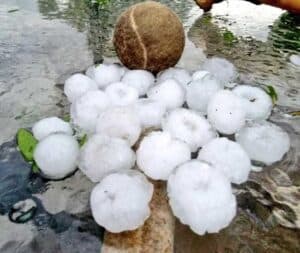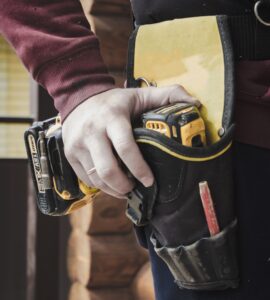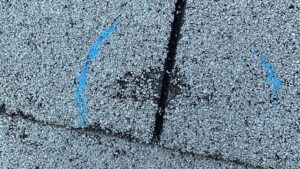If you suspect your roof has damage or is just about 15-20 years old, you will probably want to schedule a roof inspection. Once you call up a local roofing company and have a roof inspection scheduled you may be wondering what your roofer will be looking at during the roof inspection.
Roof material, roof age, and roof condition
The roofing materials will be specifically examined during the roof inspection. This includes determining whether there are any excessive signs of wear and tear, such as worn shingles or areas where the roofing shingles are no longer attached to the home. Knowing the age of the roof is useful information because it gives you an idea of how long it will last. If you don’t know, the roofing contractor will try to estimate how long the roof will last based on its current condition.
Metal roof elements
Roofs aren’t always made of asphalt shingles. Various metal components also help to keep the roof dry and stable. This includes the flashing that is installed around things like your chimney or other surface structures. On the roof, there are usually a number of vents and valleys where two sections of the roof meet. These areas will be examined during the inspection to ensure they are intact and in good overall condition. Areas that are missing, warped, damaged, or rusted may require repair or replacement.
Chimney and roof vents
Your home’s chimney is frequently a source of leaks, especially if the chimney is not properly flashed. If the chimney has been damaged or is no longer functioning properly, it may be necessary to complete repairs.
Downspouts and gutters systems
The gutters are an important part of your roofing system’s functionality. If gutters are not installed, water from rain and melting snow will enter the home and run down the siding and to the foundation. Many homes may be at risk of erosion and moisture as a result of this. During the roofing inspection, the contractor looks for any potential problems. This could include gutters that are no longer flush against the side of the roof or gutters that are no longer flush against the side of the roof.
Downspouts are also essential. These aid in the movement of water away from the house once it reaches the gutters. If they are clogged, have holes in them, or are otherwise damaged, water will have a difficult time moving away from the house as it should. During the roof inspection, the professional looks for signs of damage, aging, or inefficiencies that could limit the ability of the gutter system to keep water away from the foundation. When possible, replace gutters and downspouts along the roof, though this is not always necessary.
The home’s siding
The siding can identify any areas of concern with the roof. There could be signs of water damage, such as siding pulling away from the structure. This could indicate a gutter issue. Mold growth on the siding can also indicate the same thing at times.
Siding is not a part of your roofing system, but it can provide insight into what your home requires to stay safe and dry. Work closely with your roofing inspector to determine whether you need to replace your siding as well as your roofing.
Window and window frames
A thorough roofing inspection will also include a look at the wood framing around the windows. Metal framing is used in some homes. The goal in all cases is to better understand any damage to this area, such as signs of wood rotting, which could indicate water penetration. Additionally, there may be signs of missing framing or areas where the framing is no longer providing adequate ventilation protection.
The framing around your windows is not necessarily a repair need related to your roof, but it can shed light on what is going on in your neighborhood. The roofing could be the source of the problem here.
Storm-related Damage
Minneapolis roofs get hot every year with storms, either hail storms or just winds and snow. As your roofing inspection progresses, you can expect the contractor to look for signs of storm damage. The inspector may be looking for the following types of damage:
- Shingles are missing.
- Potholes caused by hail in the area
- Objects falling on the surface cause shingle damage.
- Roofing structure flaws
- Shingles that are loose or no longer attached
Storm damage can be severe or minor. It could be in just one area of the roof or throughout the entire structure. Storm damage, whether from hail, wind, or falling objects, is an important part of any roofing inspection because if not treated, it can lead to complications later.
Skylights, dormers, solar tubes
You probably appreciate the added benefit of natural light if you have a skylight or a sun tube on your roof. However, these areas are vulnerable to leak concerns, particularly around the edges. Notify the roof inspector if you notice any damage, such as dampness inside the window.
Overall Roof Structure and Integrity
The goal of the roof inspection is to determine whether the roof is in good condition or if it requires a roof replacement or repairs. All of these factors, as well as any signs of concern, such as bowing in the middle or areas of leakage within the home, are used to estimate the structural integrity of the roof.
The more information gathered about the roof’s condition, the more likely the property will receive the type and level of care required to minimize further damage to your home’s structure. To ensure thoroughness, a good roof inspection should take some time.





